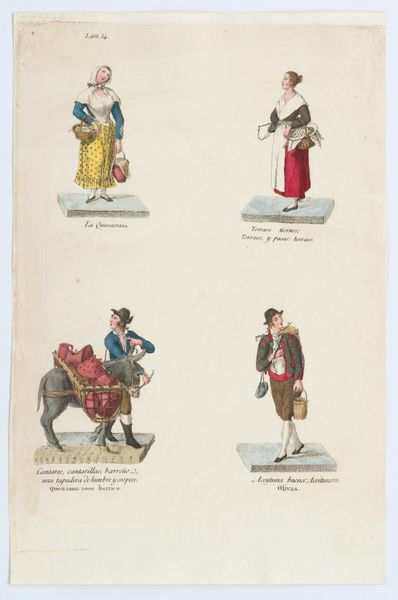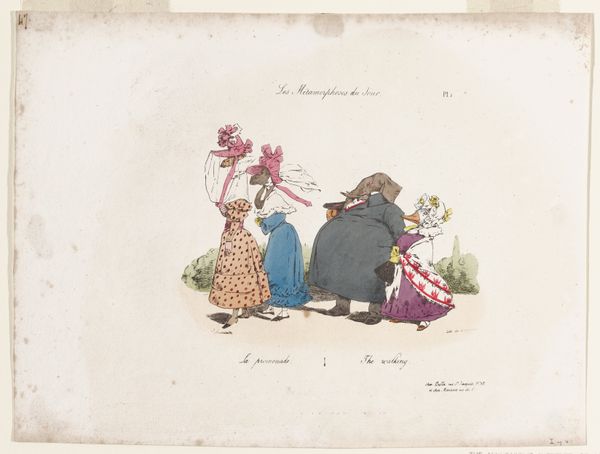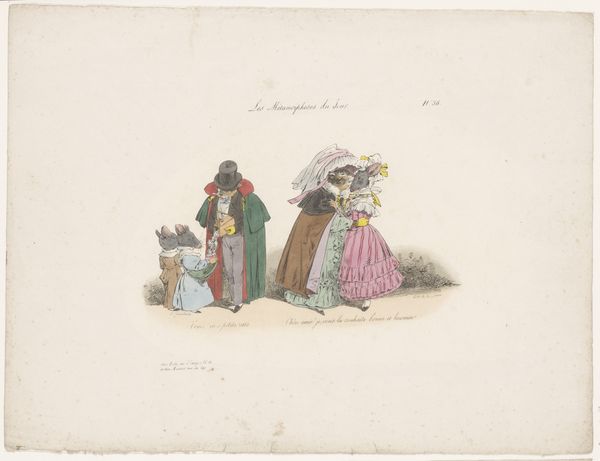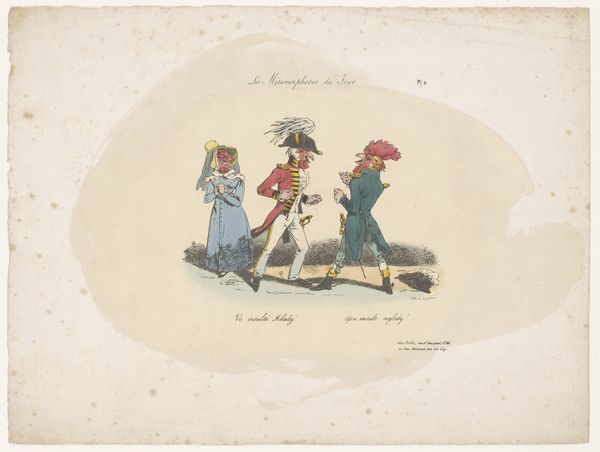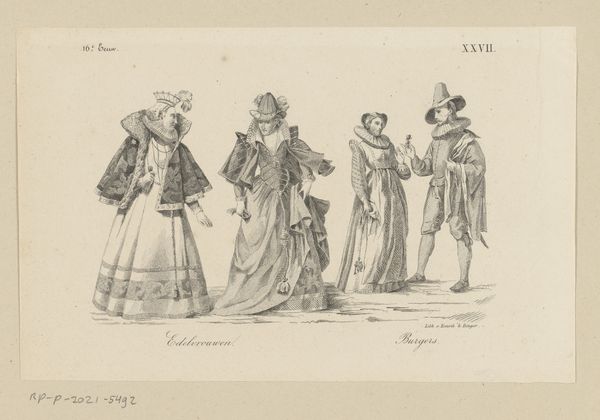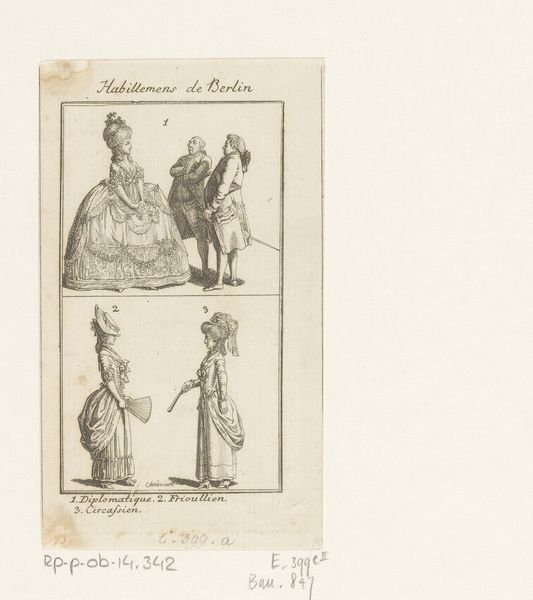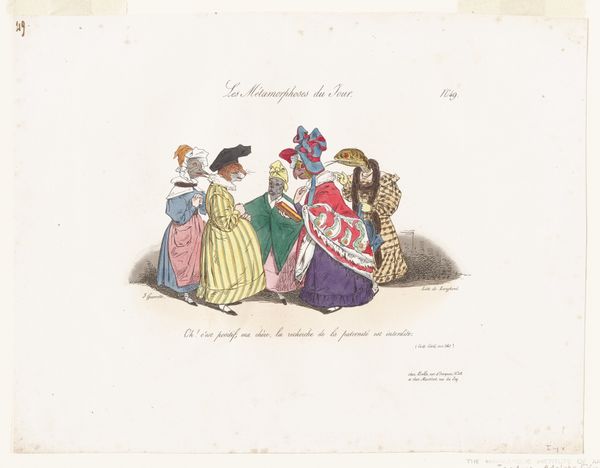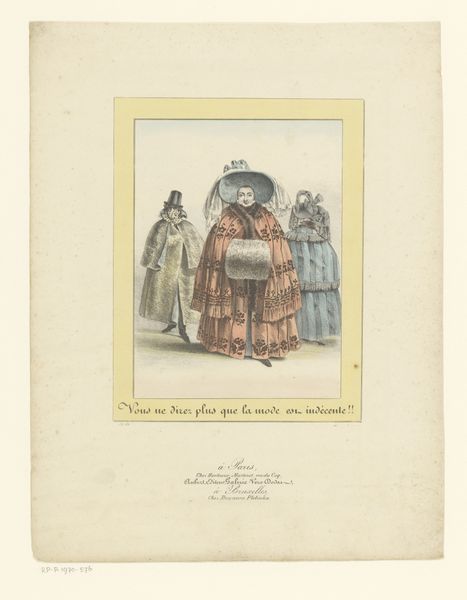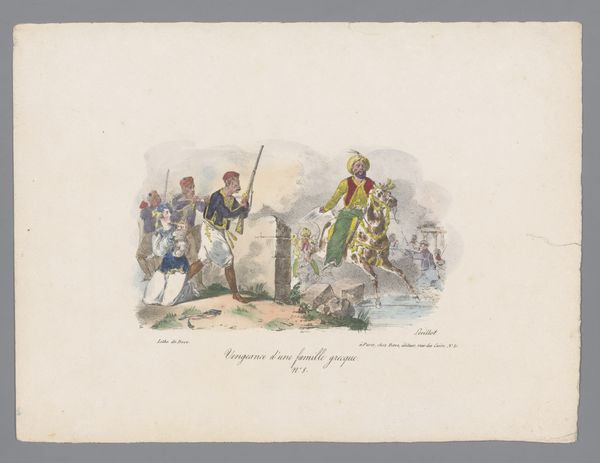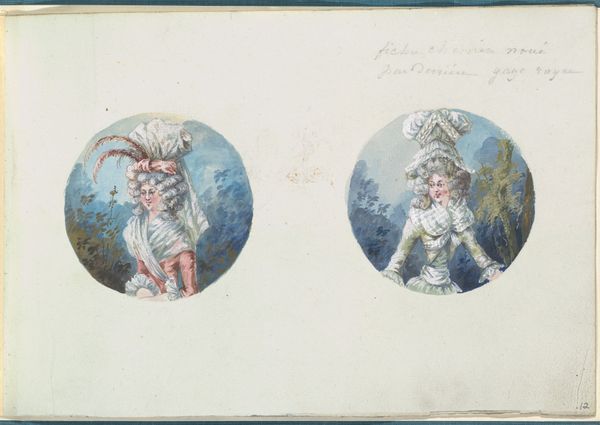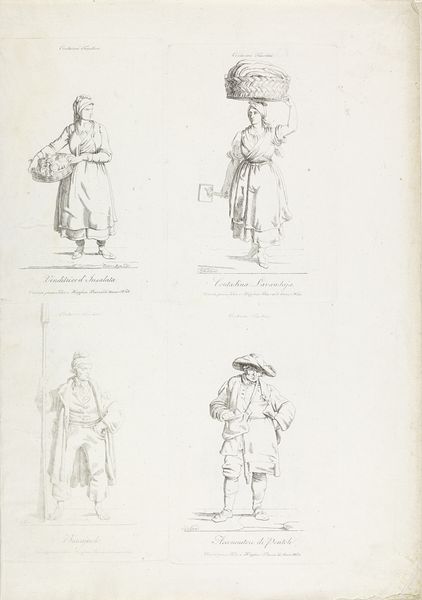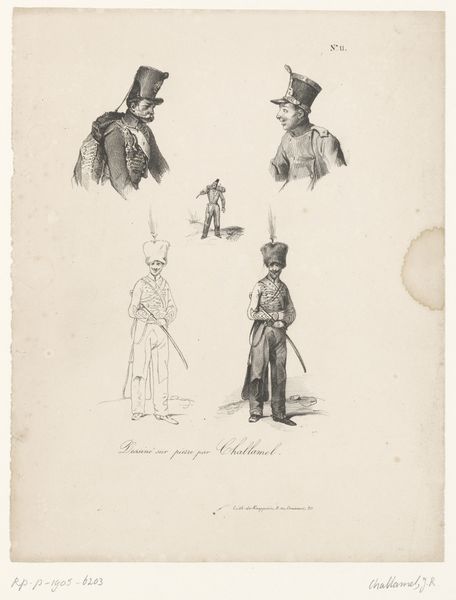
Twee vrouwen en een man en hun uiterlijke kenmerken beschreven 1829 - 1830
0:00
0:00
charlesphilipon
Rijksmuseum
lithograph, painting, watercolor
#
portrait
#
lithograph
#
painting
#
figuration
#
watercolor
#
romanticism
#
watercolour illustration
#
genre-painting
Dimensions: height 253 mm, width 333 mm
Copyright: Rijks Museum: Open Domain
Curator: Before us is "Two Women and a Man with Descriptions of their Appearances," a lithograph and watercolor work by Charles Philipon, dating from around 1829 to 1830. It's currently held here at the Rijksmuseum. Editor: It strikes me as whimsical, almost comical. The pastel hues and simplified forms give it a lighthearted air. But there's also a sharp, observational quality, wouldn’t you say? Curator: Precisely. Philipon masterfully uses line and color to depict these figures, highlighting their specific traits through careful rendering of clothing and posture. Consider the hat on the figure to the left – a structural marvel, a perfect confluence of form and function, visually defining the sitter’s upper verticality. Editor: And note the lithographic process—a relatively new technique then—allowing for broader dissemination of such social commentaries. These aren’t idealized portraits of aristocracy, but studies of identifiable urban types and their occupations—from the middle class up. Look closely, there are hand-written French descriptions underneath each figure, making them readable, as coded signs in Parisian society. Curator: Good point, this work transcends mere illustration, embodying a complex interplay of observation and representation. The rhythmic placement of figures and text activates the two-dimensionality of the work; everything is pushed forward for the viewer’s analysis. Editor: Which is all to say, lithography made art more accessible— less an object of reverence, and more a consumable image in the rapidly transforming Parisian urban experience. A visual commentary produced from industry. Curator: True; by investigating both structural and semiotic qualities within this lithograph, and also acknowledging its societal and technological contexts, one truly comes to appreciate the subtle artistry on display. Editor: It shows how processes like lithography offered not only reproducibility but a unique space for artists to investigate emerging forms of modern subjectivity. Curator: Yes, this study certainly provides much more than just superficial likenesses! Editor: Indeed. The techniques and context together create more than the sum of their parts.
Comments
No comments
Be the first to comment and join the conversation on the ultimate creative platform.
